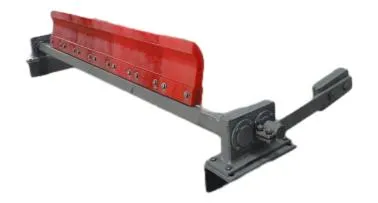lagging rubber
Lagging Rubber Understanding Its Importance and Applications
Rubber lagging is a crucial component in the world of industrial maintenance and machinery. It refers to the application of rubber sheeting or strips onto the surfaces of pulleys, drums, or other rotating equipment to enhance their performance, longevity, and safety. This reinvention of a traditional material—rubber—into a functional component of machinery has significant implications across various industries, including mining, construction, and manufacturing.
The Need for Lagging Rubber
In industrial settings, equipment such as conveyor belts and pulleys are subjected to continuous wear and tear due to friction, material impact, and environmental factors. This degradation can lead to inefficiencies, increased maintenance costs, and even safety hazards. By applying rubber lagging, businesses can mitigate these issues effectively. The rubber acts as a protective layer that reduces wear on the underlying metal surfaces, providing enhanced grip and traction during operations.
One of the primary functions of lagging rubber is to provide superior friction coefficients. This is particularly important when dealing with heavy loads or steep angles, where slippage can occur. By increasing the friction between the belt and the pulley, rubber lagging ensures that the system operates smoothly and efficiently. This is essential in industries such as mining, where heavy materials are transported over long distances.
Types of Lagging Rubber
Rubber lagging comes in various types, tailored to meet specific demands of different industries. The most common types include plain, cleated, and textured rubber lagging.
1. Plain Lagging This is the most basic form, providing a smooth surface designed for low-impact applications. It is suitable for environments where there is minimal material transfer and wear.
2. Cleated Lagging This type features raised patterns or grooves that help in preventing material from sliding off during transport. It is ideal for inclined conveyors or when dealing with loose materials.
3. Textured Lagging Designed for environments requiring a high grip, textured lagging possesses a rough surface that enhances friction and improves performance under extreme conditions.
lagging rubber

Each of these lagging types is designed to meet specific operational needs, and understanding the requirements of the machinery is essential for selecting the appropriate rubber product.
Benefits of Using Lagging Rubber
The benefits of rubber lagging extend beyond mere surface protection. By investing in quality lagging rubber, businesses can experience
1. Extended Equipment Life Rubber lagging significantly reduces wear on pulleys and conveyors, allowing these components to last longer and reducing the frequency of replacements.
2. Increased Efficiency Elevated friction reduces slippage, ensuring that machinery operates at optimal levels. This increases the productivity of operations, whether transporting materials or facilitating movement in machinery.
3. Safety Improvements The enhanced grip provided by rubber lagging minimizes the risk of accidents caused by slippage or equipment failure. This is especially important in high-stakes environments such as mining and construction.
4. Cost Savings By reducing maintenance needs and prolonging equipment life, rubber lagging can result in significant cost savings over time. Upfront investments in quality rubber products are often outweighed by the economic benefits over the lifespan of the machinery.
Conclusion
In conclusion, lagging rubber plays a vital role in modern industrial applications, providing crucial benefits that enhance performance, safety, and cost-effectiveness. As industries continue to evolve and seek ways to improve efficiency, the use of rubber lagging will remain a critical component of machinery operations. Understanding its applications and advantages can help businesses make informed decisions about their equipment maintenance strategies, ultimately leading to improved operational outcomes and profitability.
-
Impact Roller for Belt Conveyor – Durable Solutions for IndustryNewsNov.24,2025
-
Rubber Conveyor Rollers – Quiet, Durable, Sealed BearingsNewsNov.24,2025
-
Industrial Conveyor Belt Rollers: Durable Solutions for Harsh EnvironmentsNewsNov.24,2025
-
Idler Rollers for Belt Conveyors | Durable, Low-Noise OEMNewsNov.24,2025
-
Durable Rubber Conveyor Belt Rollers for Industrial UseNewsNov.24,2025
-
Ceramic Lagging Conveyor Pulley – Anti-Slip, Wear-ResistantNewsNov.17,2025






























